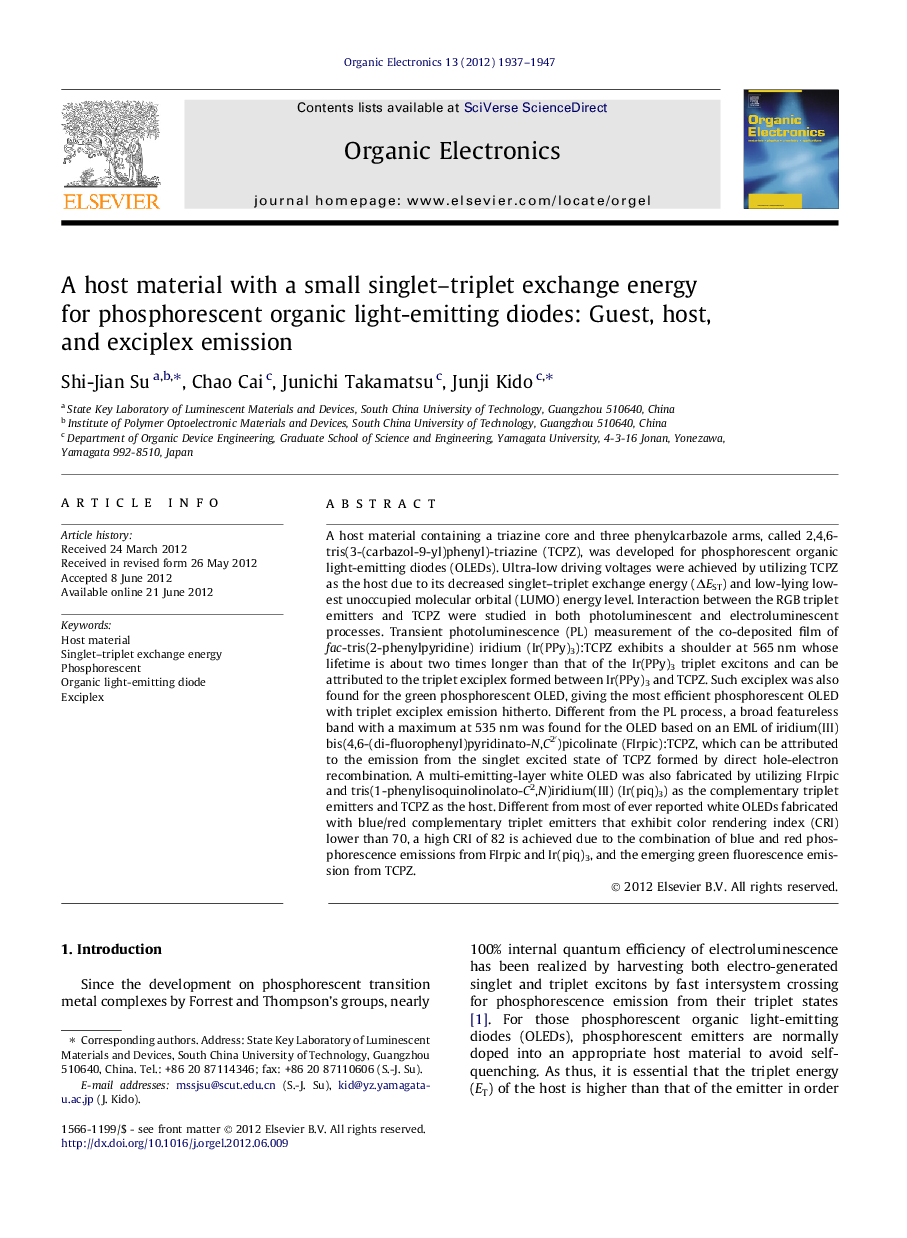| کد مقاله | کد نشریه | سال انتشار | مقاله انگلیسی | نسخه تمام متن |
|---|---|---|---|---|
| 1267364 | 972345 | 2012 | 11 صفحه PDF | دانلود رایگان |

A host material containing a triazine core and three phenylcarbazole arms, called 2,4,6-tris(3-(carbazol-9-yl)phenyl)-triazine (TCPZ), was developed for phosphorescent organic light-emitting diodes (OLEDs). Ultra-low driving voltages were achieved by utilizing TCPZ as the host due to its decreased singlet–triplet exchange energy (ΔEST) and low-lying lowest unoccupied molecular orbital (LUMO) energy level. Interaction between the RGB triplet emitters and TCPZ were studied in both photoluminescent and electroluminescent processes. Transient photoluminescence (PL) measurement of the co-deposited film of fac-tris(2-phenylpyridine) iridium (Ir(PPy)3):TCPZ exhibits a shoulder at 565 nm whose lifetime is about two times longer than that of the Ir(PPy)3 triplet excitons and can be attributed to the triplet exciplex formed between Ir(PPy)3 and TCPZ. Such exciplex was also found for the green phosphorescent OLED, giving the most efficient phosphorescent OLED with triplet exciplex emission hitherto. Different from the PL process, a broad featureless band with a maximum at 535 nm was found for the OLED based on an EML of iridium(III) bis(4,6-(di-fluorophenyl)pyridinato-N,C2′)picolinate (FIrpic):TCPZ, which can be attributed to the emission from the singlet excited state of TCPZ formed by direct hole-electron recombination. A multi-emitting-layer white OLED was also fabricated by utilizing FIrpic and tris(1-phenylisoquinolinolato-C2,N)iridium(III) (Ir(piq)3) as the complementary triplet emitters and TCPZ as the host. Different from most of ever reported white OLEDs fabricated with blue/red complementary triplet emitters that exhibit color rendering index (CRI) lower than 70, a high CRI of 82 is achieved due to the combination of blue and red phosphorescence emissions from FIrpic and Ir(piq)3, and the emerging green fluorescence emission from TCPZ.
Figure optionsDownload as PowerPoint slideHighlights
► We report on a bipolar host material with small singlet–triplet exchange energy.
► Ultra-low driving voltages were achieved for the phosphorescent OLEDs.
► Interactions between the host and the guests were studied in PL and EL processes.
► Efficient triplet exciplex emission was found for the green phosphorescent OLED.
► A high CRI white OLED was achieved with blue/red complementary triplet emitters.
Journal: Organic Electronics - Volume 13, Issue 10, October 2012, Pages 1937–1947